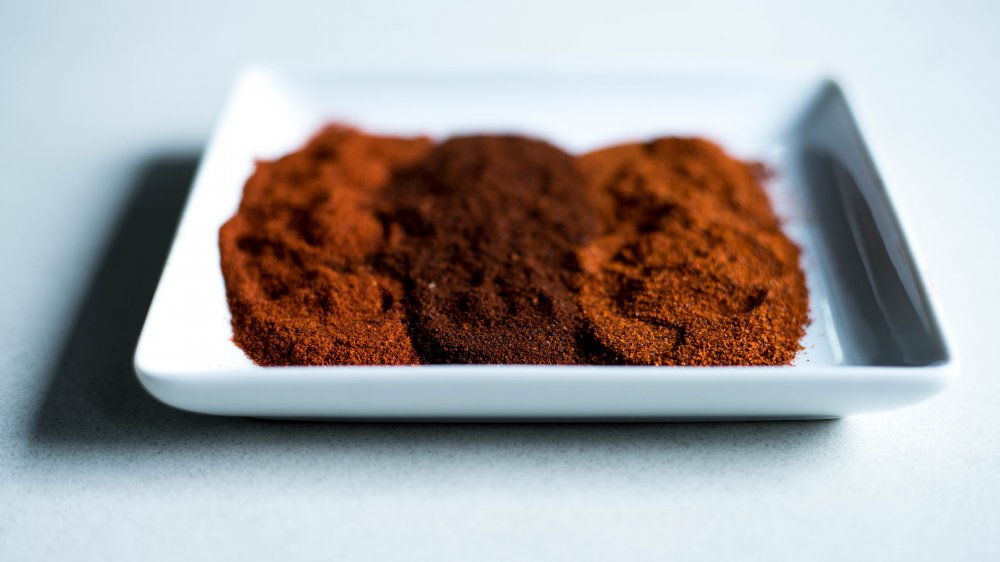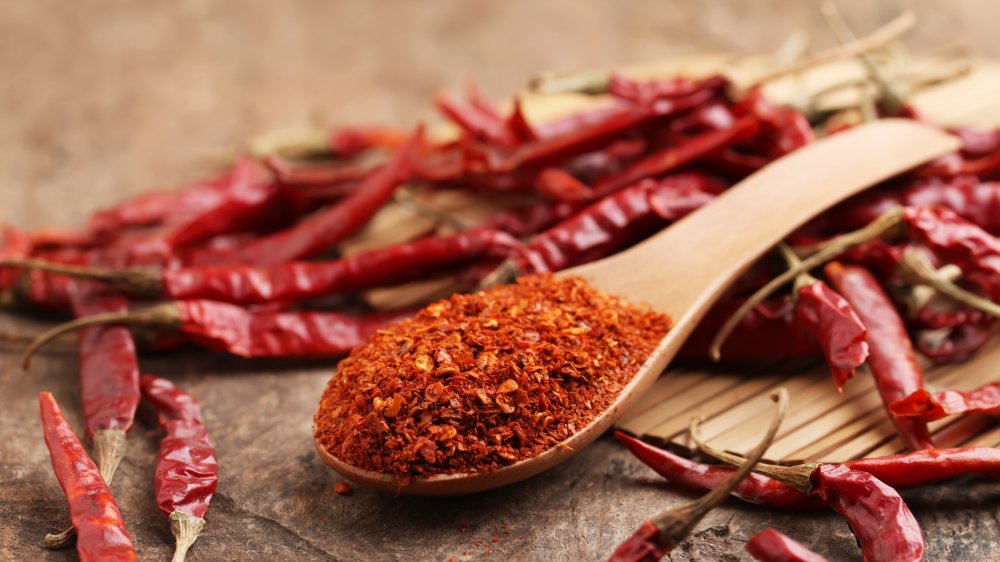Cayenne Pepper Vs. Paprika: Which Is Actually Hotter?
Paprika and cayenne may share a semi-similar appearance on the spice rack, but they tend to be worlds apart when it comes to packing heat — a comparison that's made more complex due to the trio of main paprika varieties that are commonly available in stores.
First, let's look at their origin stories. According to Healthline, cayenne peppers (a variety of chili peppers) are a type of nightshade and "closely related to bell peppers and jalapeños," and their heat-producing element is called capsaicin, which determines the level of spiciness. Basic paprika, on the other hand, can be ground from sweet peppers, but there are other varieties, too: Hungarian paprika is a hotter option, and smoked paprika gets its namesake complex flavor from peppers that are "dried over oak fires" (via Cooking Light).
Hence, different types of paprika register differently on the Scoville Heat Units (SHU) scale, while cayenne tends to remain steady.
Ranking the heat of cayenne pepper vs. paprika
According to PepperScale, cayenne peppers bring a medium heat level, with SHU levels of 30,000 to 50,000. But even the most fiery of paprika types rank at a much lower 15,000, with most hot paprika registering at about 500 (via SPICEography). In fact, PepperScale points out, hotter paprika may even contain a sprinkling of cayenne to raise the heat factor.
In terms of flavor, cayenne pepper and paprika offer different tastes, too. Paprika can be called "sweet and fruity," or smoky in the case of smoked varieties, while cayenne offers up a "neutral peppery flavor" while still adding color and heat to dishes. And, according to Cooking Light, even smoked paprika can offer a range of heat levels — mild, medium, and hot.
Cooking Light further notes that chefs can sprinkle in sweet paprika for general uses, but if a recipe calls for hot paprika, sweet paprika with a hint of cayenne can be substituted. On the other hand, says PepperScale, if meant to completely replace paprika, cayenne should be used in a much smaller quantity, so as not to overwhelm the dish (and sensitive diners' palates). Likewise, SPICEography explains that hot paprika can replace cayenne, but more may be needed to sufficiently replicate the latter's considerable heat.

